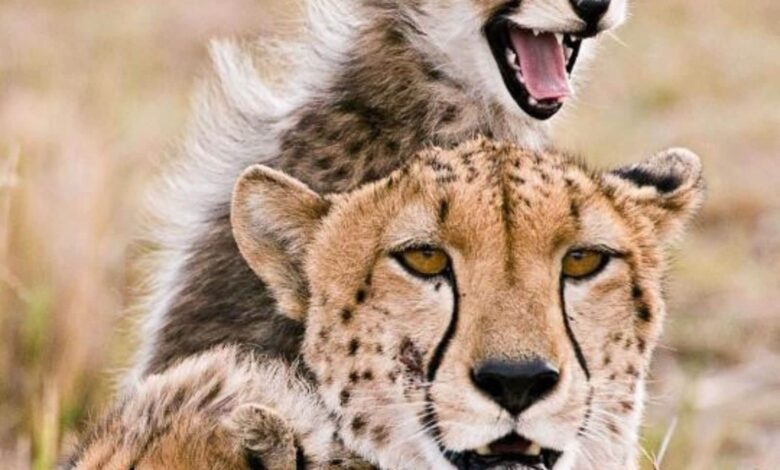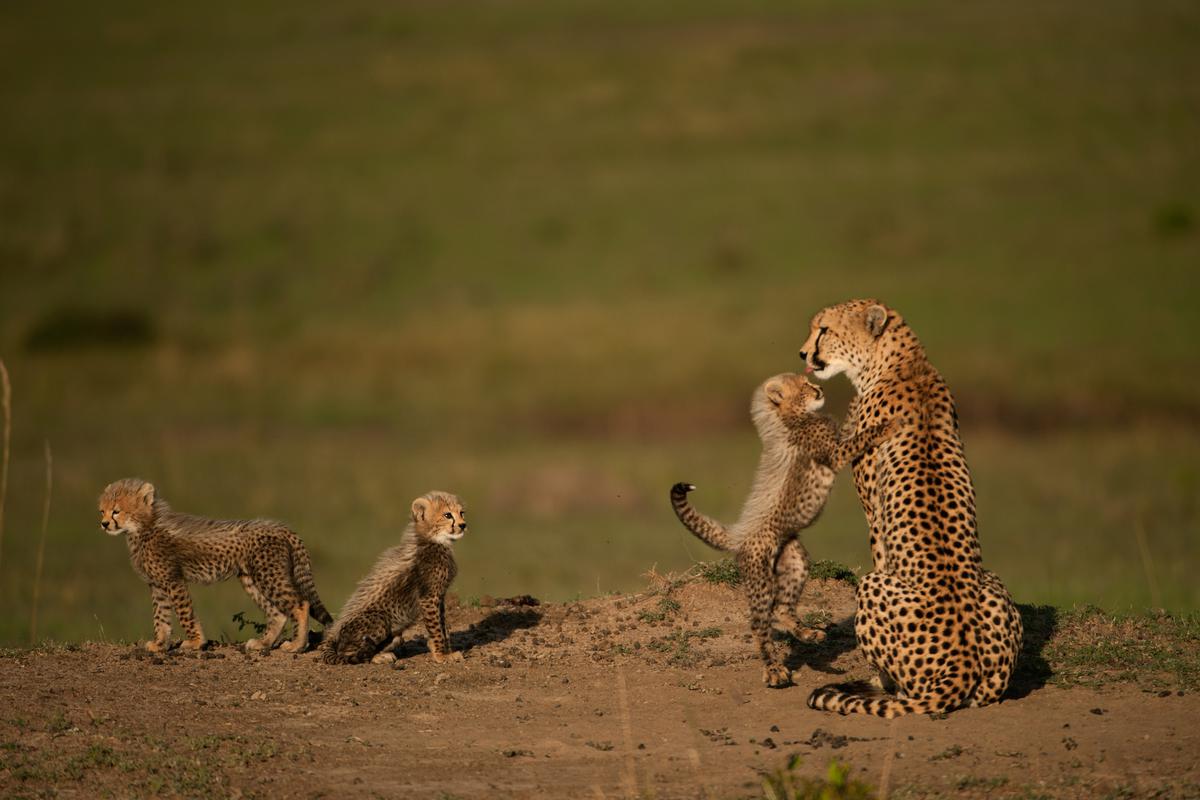African Cheetahs Should Not Be Translocated To India, According To Conservationists

African Cheetahs Should Not Be Translocated To India, According To Conservationists
The translocation of cheetahs has been criticized as a vanity project to grab attention. Here’s why
The last known Asiatic cheetahs went extinct in India over 70 years ago, and eight African cheetahs will be introduced to Madhya Pradesh’s Kuno National Park.
A first-of-its-kind conservation project for cheetahs and the grasslands they inhabit is scheduled to be launched, on birthday, September 17, by Prime Minister Narendra Modi.
It has been argued, however, that India lacks the habitat and prey species to support wild, free-roaming African cheetahs, therefore, this project will fail to achieve its grassland conservation goal, and the priority should be placed on protecting other threatened species, such as caracals and the Great Indian Bustard.
Ancient Neolithic cave paintings in central India feature the species, which is known by the Sanskrit name “Cheetah,” which means “the spotted one.” The subspecies that are now being found in Iran are the same ones that vanished in the 1940s and were formally declared extinct in 1952. When three cheetahs were shot in the Sal woods of the Koriya District, Chhattisgarh, in 1948, it was the last time that cheetahs were seen in the wild in that country. The central and Deccan areas occasionally reported sightings up till the mid-1970s.
The IUCN Red List of Threatened Species for 2021 classifies the cheetah (Acinonyx jubatus) as “vulnerable.” There are now just 6,517 adults remaining around the globe. Several nations, including Botswana, Chad, Ethiopia, Iran, Kenya, Namibia, South Africa, and Zimbabwe, are home to the cheetah. Cheetahs, which are currently solely found in Iran, belonging to the subspecies A. j. venaticus, also known as the Asiatic cheetah. There are currently less than 50 adult cheetahs in Iran, according to a recent analysis.
It could not be taken into consideration for translocation to India given how few Asiatic cheetahs currently exist in Iran. The African cheetah was thus chosen for intercontinental translocation to India by the Indian authorities.
The project’s history
In 2009, the Wildlife Trust of India began talking about reintroducing cheetahs to India. Government authorities and specialists from all around the world decided to inspect the locations to look into the prospect of reintroduction.
Priority was given to the old cheetah range states of Gujarat, Rajasthan, Chhattisgarh, and Madhya Pradesh. Kuno Palpur National Park (KNP) in Madhya Pradesh received the highest rating out of the ten sites assessed in the central Indian states due to its acceptable habitat and sufficient prey base.
KNP has a land area of 748 sq km, is uninhabited, is a part of the Sheopur-Shivpuri deciduous open forest ecosystem, and is thought to be able to support 21 cheetahs. The total evacuation of towns from inside the park is most likely unique to Kuno, a wildlife site in the nation. According to a government press release, Kuno also presents the possibility of harbouring the four great cats of India—the tiger, lion, leopard, and cheetah—and enabling them to coexist as in the past.
These discussions were terminated in 2013 by the Supreme Court (SC). The Ministry of Environment, Forest and Climate Change’s (MoEFCC) proposal to bring the African cheetah from Namibia into India came under fire from the SC in a case involving the translocation of Asiatic lions from Gujarat to KNP. It was stated that before bringing this alien species to India, a thorough scientific examination was not conducted and that Kuno is not a historical home for African cheetahs.
“At this point, in our opinion, the MoEF’s choice to introduce African cheetahs first to Kuno and later Asiatic lions is arbitrary, unlawful, and blatantly in breach of the legal standards outlined in the Wildlife Protection Act. The order from the MoEF to bring African cheetahs to Kuno cannot be upheld in the eyes of the law and is revoked “In its 2013 ruling, the Supreme Court declared. Gujarat is home to the only isolated population of Asiatic Lions, a threatened species.

The National Tiger Conservation Authority re-appealed to the SC in January 2020 with a request to reintroduce cheetahs to India, and it was suggested that the African cheetahs be done so on an experimental basis in a carefully selected area. The SC eventually agreed to this in the same year and appointed an expert committee to assess if importing the African cheetah on a bigger scale was feasible. Former director of wildlife preservation M.K. Ranjit Sinh, chief conservator of forests for Uttarakhand Dhananjai Mohan, and director general (Wildlife).
A cheetah action plan was published by the Indian government in 2021. By August 15, 2022, when India would have celebrated 75 years of independence, cheetahs were meant to be introduced, however, problems caused the debut to be delayed by next month. The Madhya Pradesh administration worked nonstop for weeks to be ready for the cheetahs’ arrival, and they were ultimately flown in from Namibia this morning.
On September 16, a modified passenger jumbo aircraft departed Windhoek, Namibia, carrying the eight cheetahs (five females and three males). The chopper is transporting the cheetahs to Kuno National Park after the aircraft landed in Gwalior this morning after a flight that took place throughout the previous night. Visit this link to read our Twitter thread to learn more about cheetahs.
Being the first time the wild Southern African cheetah has ever been translocated anywhere in the globe, this transcontinental relocation is also a significant step for Namibia. According to a news statement from the Cheetah Conservation Fund, which is in charge of this endeavour, “the cheetahs on this trip are not merely the founders of a new colony but explorers and goodwill ambassadors for a whole species.” During the nonstop trip, veterinarians had complete access to the cats, and now the Indian government will conduct a “soft release” of the felines into a 6 sq km area after radio-collaring them for observation.

According to carrying capacity calculations, the Kuno landscape’s prospective cheetah habitat, which is over 3,200 sq km (up from the present 740 sq km) may support up to 36 cheetahs by serving as a base of prey. Five years and Rs 39 crore ($5 million) are allocated to the project. India wants to support cheetah conservation efforts worldwide by allowing them to continue playing their essential role as top predators and by allowing them to naturally spread out within their historical habitat. The use of the cheetah as a “charismatic flagship and umbrella species” to raise funds for the restoration of open forest and savanna systems that would enhance biodiversity is another important goal of this initiative.
From September 9 forward, the federal government launched an awareness campaign in schools for cheetah conservation, engaging more than 17,000 pupils from 12 states. With a local mascot entitled “Chintu Cheetah,” public awareness initiatives have been formalized for the nearby villages, which will be known as “Cheetah Mitras.”
The government’s action plan underlined that to rescue cheetahs, one would need to protect not just their prey base, which includes certain vulnerable species, but also other endangered species of the grasslands and open forest ecosystems, some of which are at risk of becoming extinct. The great Indian bustard (GIB), the smaller florican, and the caracal are three of the bustard family’s endangered species, together with the Indian wolf and the caracal. According to the government, the initiative will be successful in the short term if the imported cheetah survives for 50% of the first year, establishes home ranges in KNP, successfully reproduces in the wild, and has F1 generation, or the first offspring that successfully breeds.

If the imported cheetahs do not survive or do not breed within five years, for example, the initiative will be deemed a failure. The action plan said that in such a situation, the program “needs to be assessed for other strategies or termination.”




